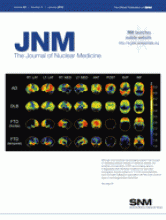REPLY: We thank Dr. Basu for his thoughtful and detailed suggestion that 18F-FDG PET/CT might also reliably differentiate responders from nonresponders at 2 mo. It is correct and important to conduct a microbiologic evaluation 2 mo after initiation of treatment. However, patients with positive cultures after 2 mo of treatment should undergo careful evaluation to determine the cause. In patients who have not been under direct observation during therapy, the most common reason for positive cultures after 2 mo is nonadherence to the regimen. Other possibilities are, of course, drug resistance and biologic variation in response (1). Hence, our study was designed as per the guidelines, in that patients whose sputum cultures remain positive after 4 mo of treatment should be deemed treatment failures (1). Also, second-line drug susceptibility testing is done only in reference laboratories and is limited to specimens from patients who have positive cultures after more than 3 mo of treatment.
Furthermore, our recent publication (2) was based on the fact that we wanted to evaluate the results without possible confounding factors such as immune reconstitution disease associated with tuberculosis. Immune reconstitution disease is rather common in HIV-associated tuberculosis because some of the risk factors include early initiation of antiretroviral therapy during tuberculosis treatment, low baseline CD4 cell counts, disseminated tuberculosis, and rapid immune and virologic responses to antiretroviral therapy (3,4). As such, the impact of immune reconstitution disease on PET/CT needs to be addressed when one is considering the use of 18F-FDG PET during treatment.
Finally, we agree that the timing for follow-up imaging is unclear and should be revisited, even more so because common regimens adopted upfront after the diagnosis of tuberculosis are isoniazid, rifampicin, ethambutol, and pyrazinamide (HREZ) daily for 2 mo, followed by 4 mo of isoniazid and rifampicin (HR), or streptomycin, isoniazid, rifampicin, and pyrazinamide daily for 2 mo, followed by 4 mo of HR. The consideration of response to treatment at 6–8 wk may determine the extension of 2 mo of HREZ and 4 mo of RE to 3 and 6 mo, respectively, or to 3 and 9 mo, respectively, or the use of a second-line regimen. This type of work may also help to determine whether one can justify regimens such as either 3 mo of HREZ and 6 mo of HR or 3 of HREZ and 9 mo of HR, which have not been objectively validated. This would have potential implications in identifying cases of drug-resistant tuberculosis and tailoring the treatment.
Footnotes
Published online Nov. 7, 2011.
- © 2012 by the Society of Nuclear Medicine, Inc.







